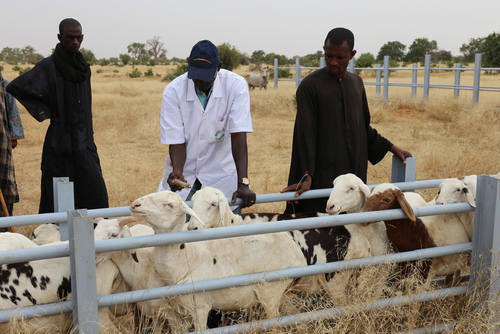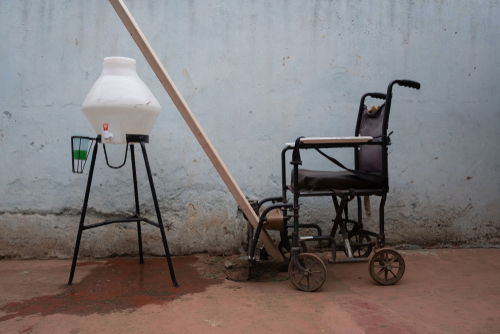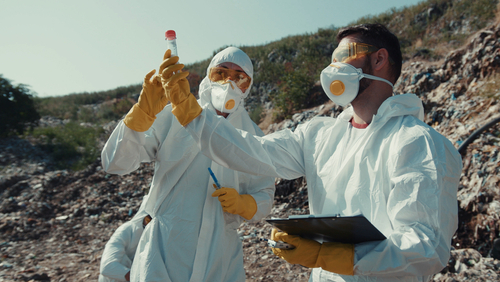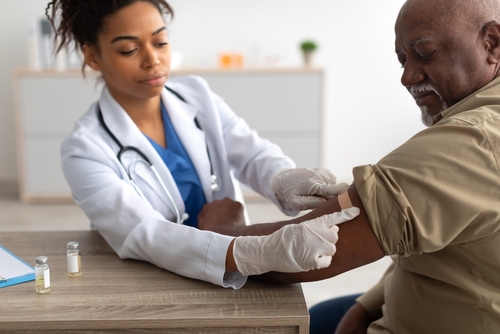February 06, 2024

Inequities in global priorities and agendas threaten the mitigation of AMR
OHT’s Ramanan Laxminarayan co-authored an article that calls for a shift in the global fight against antimicrobial resistance (AMR) to prioritize equity in global agendas. Global funding today focuses on research and development of new therapeutics for hard-to-treat infections, a priority for high-income countries with well-established health infrastructure. In the Global South, research consistently shows that mitigation efforts that reduce infections (vaccines, improved water, sanitation, and infection prevention control) have the highest impact on AMR reduction. An Independent Panel on AMR must be created urgently to bring visibility to the evidence on AMR. At the same time, there is a need for the inclusion of and commitment from leaders from the Global South to ensure the sustainability of the interventions. [The Lancet Global Health]
Where does artificial intelligence fit in antibiotic innovation?
A systematic review assessed the role of artificial intelligence (AI) in antibiotic development and utilization. Despite the rapid emergence and spread of AMR, only 18 novel antibiotics were approved between 2014 and 2021. AI has already been a component in designing novel antibiotics and biological therapeutics, identifying new applications for existing drugs, and predicting resistance mechanisms; however, AI’s utility in drug development is challenged by its limited decision-making capacity and lack of transparency to its human users, among other issues. [Military Medical Research]
The RTS,S malaria vaccine will be administered to children in Cameroon in a nationwide campaign
In 2021, malaria was responsible for nearly 14,000 deaths in Cameroon. In November 2023, the country received 331,200 doses of the RTS,S vaccine to be distributed to nearly 250,000 children aged 0-24 months in 42 health districts. The RTS,S vaccine, which targets the malarial parasite Plasmodium falciparum, led to a 22 percent reduction in hospitalizations for severe malaria in a 2019 pilot program in Ghana, Malawi, and Kenya. [Gavi, the Vaccine Alliance]
Implementation of AMR strategies in China requires investment from hospital leadership.
A qualitative study assessed stakeholders’ perceptions of China’s National Action Plan (NAP) on Antimicrobial Resistance (2016-2020) and explored factors that impact its implementation in medical institutions. Less than half of the clinicians interviewed expressed a heightened concern about the state of AMR in their institutions. The authors recommend engaging senior hospital leaders in antimicrobial stewardship and strengthening interprofessional connections to overcome key barriers to NAP implementation. [BMC Health Services Research]
Low hand hygiene compliance among physicians in Brazil
A prospective observational study assessed hand hygiene (HH) compliance, HH technique, and factors related to HH practice among health professionals in a COVID-19 intensive care unit (ICU) in midwestern Brazil between September and December 2021. The overall HH compliance rate was very low (26.4 percent), and only 6.5 percent of compliant individuals observed the correct 3-step hand–washing technique for the minimum time requirement. HH compliance was substantially lower in moments preceding patient-centered tasks (6.7%; 95% CI: 4.8-9.2%) than in moments following such tasks (43.8%; 39.9-47.8%). [Antimicrobial Resistance & Infection Control]
Bioinformatic tools have low sensitivity for detecting pathogens in agricultural food samples.
A comparative analysis modeled the limits of detection of various bioinformatic tools for antimicrobial resistance genes (ARGs) in foods produced by agriculture or agri-food. As the total number of reads in a synthetic metagenomic sequence increased, the proportion of bacterial isolate sequence reads needed by the bioinformatic tools to detect ARGs decreased, increasing the sensitivity for ARG detection. However, current metagenomic methods may not be suitable for monitoring low-abundance AMR pathogens in agri-food samples unless further technological advancements are made. [BMC Microbiology]
Protecting perinatal health in future epidemics
The WHO introduced the concept of “Disease X” to underscore the need for global preparedness efforts against new and emerging infectious diseases. Perinatal data collection systems, such as blood storage protocols, must be established to track and prevent both existing and emerging infectious diseases that affect pregnant people, infants, and children before they reach epidemic levels. Interventions, such as maternal and newborn vaccines, rapid diagnostic methods, and collaborations between countries in the Global South, are particularly important for improving perinatal health outcomes in preparation for future viral epidemics. [Nature Pediatric Reports]
High rates of Avian influenza virus in poultry farms in Bangladesh
A cross-sectional study of 225 commercial chicken farms in Bangladesh between January 2017 and July 2019 revealed that 40 percent had avian influenza virus (AIV) infected poultry. Flock size was significantly associated with AIV infection risk; the farm with the largest flock size had a predicted AIV risk of 80 percent. The presence of a live bird market (LBM) within 500 meters of the farm was also associated with increased AIV risk, from 5 to 50 percent. Given that nearly half of commercial chicken farms in Bangladesh are located within 500 meters of an LBM, poultry farmers must receive training on feasible biosecurity practices to reduce the prevalence of AIV in chicken farms. [One Health]
Factors affecting malaria vaccine uptake in under-five children in Ghana
Analysis of the 2019 Ghana Malaria Indicator Survey data shows that parents from middle-income households (odds ratio 9.342; p<0.05) and those from the poorest households (OR 9.409; p<0.05) were more likely to allow their child to receive the malaria vaccine than parents from the richest households. Parents with awareness of the malaria vaccine were significantly more likely to allow for the vaccination of their child compared to those without such awareness (OR 2.200; p<0.01), highlighting the potential role of education campaigns in increasing under-five malaria vaccination coverage. [PLOS One]
Mothers in Japan are more favorable than fathers to HPV vaccination for their children.
The Japan COVID-19 and Society Internet Survey data reveals differences in parents’ intention to vaccinate their children against HPV. Mothers were more knowledgeable about HPV and more favorable to vaccinating their children for HPV than fathers. Additionally, mothers were more likely to have strong opinions for or against HPV or COVID-19 vaccination for their children, while fathers held more neutral or undecided opinions. The observed differences in vaccination intention by parental gender may be attributable to patriarchal gender roles in Japan, which primarily place the responsibility of family health decisions upon women and mothers. [Vaccine:X]
Image designed by Samantha Serrano in Canva











